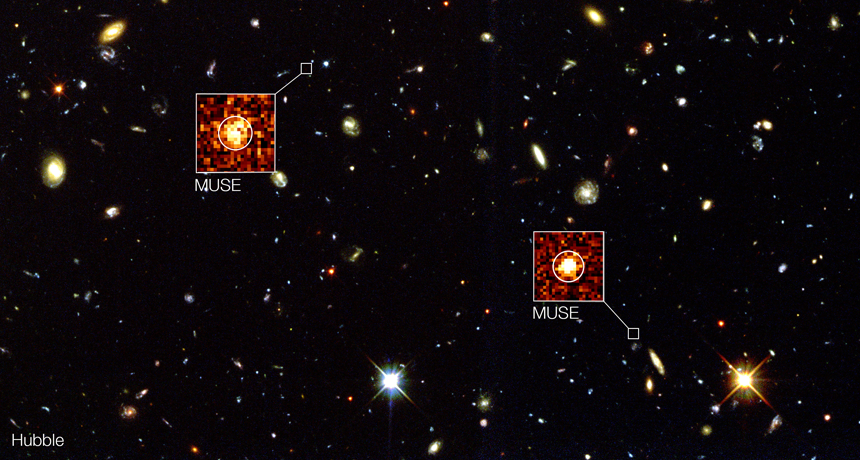Hundreds of galaxies seen in a new 3-D view of the universe
New instrument helps researchers look back in time nearly 13 billion years

FAR, FAR AWAY With the help of a new instrument, researchers measured distances to 181 galaxies, seen in this Hubble Space Telescope image, including a few that Hubble missed (highlighted).
R. Bacon/MUSE/ESO







